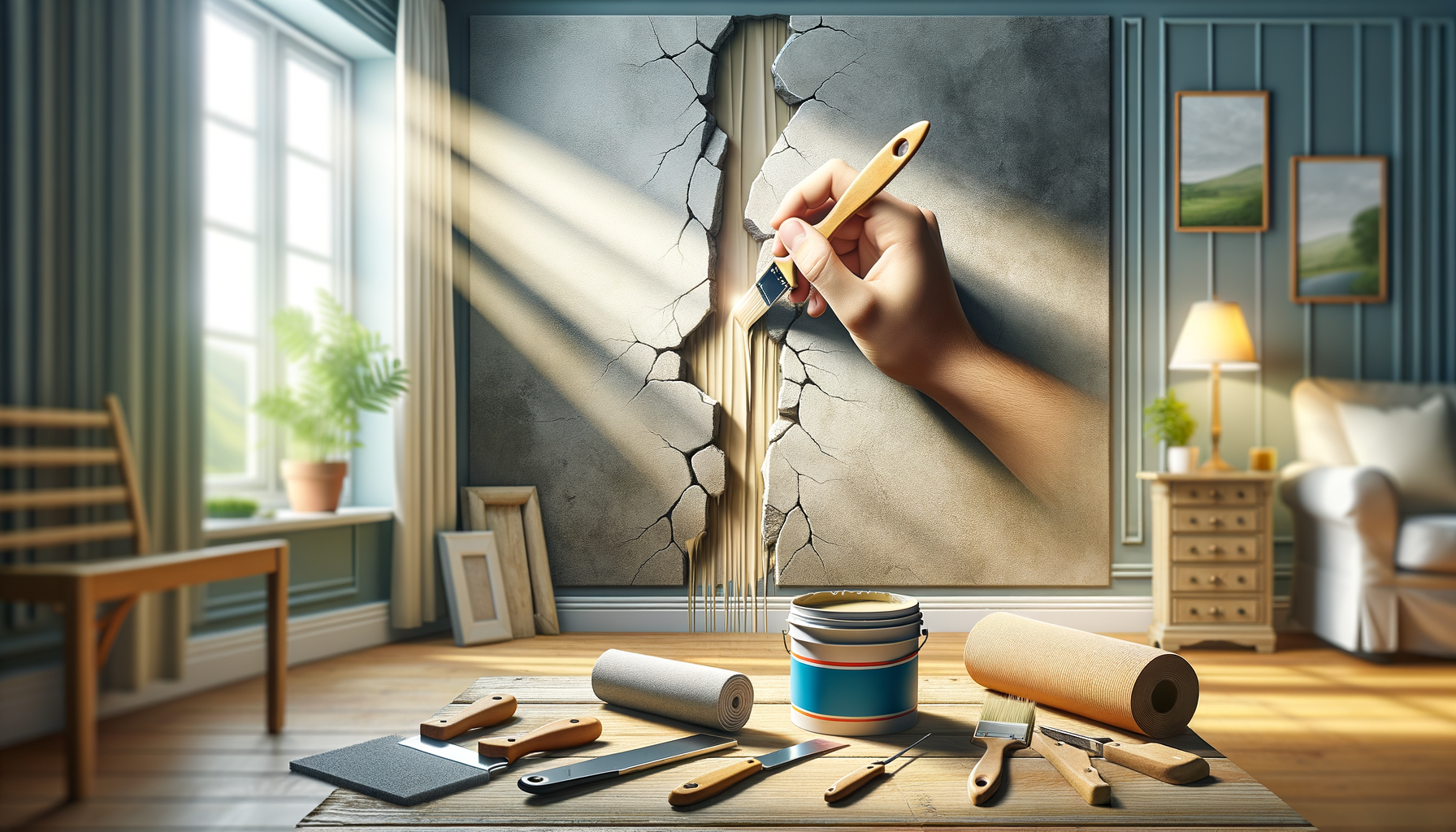Why Do Walls Crack?
Seeing cracks in your walls can be scary, but not all cracks mean big trouble. Knowing the types and why they happen can help you fix them right.
Types of Wall Cracks
- Vertical Cracks: These are often due to the house settling over time. They are usually not a big deal.
- Horizontal Cracks: These can be more serious and may mean foundation problems.
- Diagonal Cracks: These happen because parts of the house settle differently or shift.
- Hairline Cracks: Tiny cracks that often come from drying and shrinking. They usually don’t mean big problems.
What Causes Wall Cracks?
- Foundation Settling: As the ground under your house moves, it can cause cracks.
- Temperature Changes: Hot and cold weather can make materials expand and contract, leading to cracks.
- Poor Building Work: Using bad materials or bad building methods can cause cracks.
- Water Damage: Too much moisture in walls can weaken them and cause cracks.
Checking the Cracks
Before fixing cracks, it’s important to see how bad they are.
How to Inspect Cracks
- What You Need: Flashlight, Measuring Tape, Camera.
- Measuring Cracks: Write down the size and where each crack is.
How Bad is the Damage?
- Small Cracks: Minor ones that don’t affect the structure.
- Big Problems: Wide and deep cracks, especially if doors are hard to close or floors are uneven.
Getting Ready to Fix Cracks
Preparation is very important.
What You Need
- Crack Filler/Sealant: Use to fill cracks.
- Putty Knife: For applying the filler.
- Sandpaper: To smooth the surface after filling.
- Paint/Primer: To finish and match the wall color.
Staying Safe
- Wear Gloves and Safety Glasses: Protects you from debris and chemicals.
- Ventilate the Area: Keep the area ventilated to avoid inhaling dust and fumes.
Fixing Wall Cracks: Step-by-Step
Follow these steps to fix cracks in your walls.
Clean the Area
- Remove Loose Debris and Dust: Use a brush or vacuum to clean the area.
Fill the Cracks
- Small Cracks: Use crack filler. Apply with a putty knife and smooth it out.
- Large Cracks: Use a special patch material for big cracks. Make sure it sticks well and fills the crack all the way.
Smooth the Surface
- Use a Putty Knife: Smooth out the filler before it dries.
- Sand the Area: After it dries, sand it to make it smooth.
Paint and Finish
- Apply Primer: Prime the fixed area to prepare for painting.
- Paint the Wall: Match the color with the rest of the wall for a uniform look.
When to Call a Professional
Sometimes the cracks are too serious for DIY fixes.
Signs of Serious Problems
- Very Wide Cracks: Cracks wider than 1/4 inch might mean big troubles.
- Water Leaking Through Cracks: Shows a moisture problem that needs more than just filling.
- Multiple Cracks: Lots of cracks in different places might mean there are big issues needing expert help.
Stopping Future Wall Cracks
Preventing cracks helps you avoid future problems.
Good Drainage
- Check Gutters and Downspouts: Keep them clean to direct water away from the foundation.
Control Indoor Humidity
- Use Dehumidifiers: Helps keep moisture levels balanced to prevent cracking.
Regular Inspections
- Check Your Home Every Season: Regular checks can find problems before they get worse.
Why Fixing Cracks Quickly is Important
Fixing cracks right away has many benefits.
Look and Home Value
- Keeps your home looking good and maintains its value.
Stop Bigger Problems
- Fixing small cracks quickly prevents them from becoming major structural issues.
By following this simple guide, you can handle wall cracks effectively and keep your home strong and beautiful. Whether you fix them yourself or know when to call for help, taking care of cracks is essential.


Leave a Reply